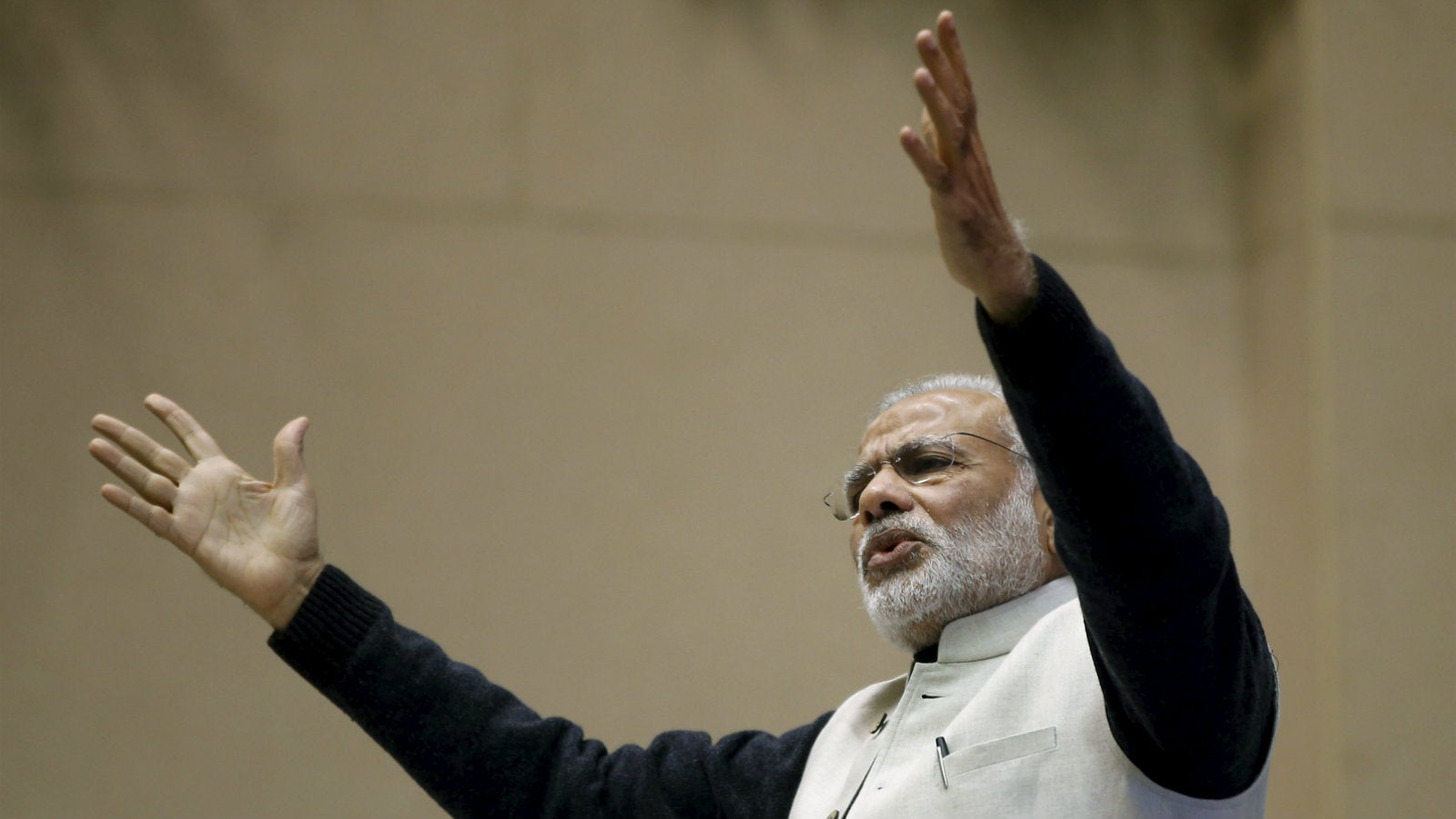There is no U in Modi, but his government just can’t stop making U-turns
The India government’s changing stands on the Kohinoor diamond’s ownership has caused considerable mirth, besides stoking disbelief, in the past few days.


The India government’s changing stands on the Kohinoor diamond’s ownership has caused considerable mirth, besides stoking disbelief, in the past few days.
On April 19, the solicitor general told the supreme court of India that the legendary gem, now part of the crown jewels of the British royalty, was a gift to the British East India Company from the then rulers of Punjab. A day later, the government issued a statement that said “we remain hopeful for an amicable outcome whereby India gets back a valued piece of art with strong roots in our nation’s history.”
A bigger flip-flop, with much broader implications, too has been played out in the past few weeks.
On Feb. 10, 2016, the government brought in amendments to the rules governing employees’ provident fund scheme—a social security fund into which both, the employees and employers, contribute. The changes brought in restrictions on withdrawals before retirement, angering a huge section of Indians.
Garment workers in Bengaluru were so incensed that they took out massive protests, which eventually led to riots. An unnerved government decided to beat a retreat.“The NDA government is seemingly excelling the art of unveiling hurried, poorly thought out policies only to roll back at the first hint of trouble,” wrote Firstpost’s Dinesh Unnikrishnan. “It also shows the intellectual drought in Modi’s cabinet, especially in the finance ministry.”
And this wasn’t the first time the government had sought to tinker with the provident fund. Finance minister Arun Jaitley, in his annual budget, proposed to tax 60% of the contributions made to the fund on withdrawal. After this kicked up a furore, the finance ministry retreated, saying that only the interest accrued on the contributions would be taxed and not the principal amount.
Flip-flop legacy
This propensity to backtrack is becoming a bit of a habit.
A little over six months after Narendra Modi was sworn in as prime minister in May 2014, his government was already being accused of brazenly going back on several promises made during the poll campaign and during his Bharatiya Janata Party’s (BJP) decade in opposition. The Congress party even brought out a booklet listing many of these U-turns.
The new rulers was derisively dubbed U-turn sarkar (U-turn government).
Some of them may perhaps be winked at as course corrections. For instance, its hardline stance on Pakistan, which changed virtually on the day Modi took charge.
Others were simply astonishing, not the least because of how desperately the government tried to usurp the very initiatives Modi and his party had scorned till then. The rural job guarantee scheme of the previous government is an example. The prime minister himself ridiculed it in parliament in February 2015, only to praise it later as a cause of national pride and celebration.
Here’s a handy—but incomplete—list of those about-turns.
Pakistan talks
The BJP’s hyper-aggressive stand on Pakistan while in opposition was prudently jettisoned the moment Modi took oath. Hopes of better ties were further kindled when India and Pakistan scheduled foreign secretary-level talks in August 2014. But days before the meet, India abruptly called off the talks. It was apparently peeved at the move by Pakistan’s envoy to India to meet members of the All Party Hurriyat Conference, a motley group of Kashmiri separatist leaders.
Yet, a year-and-half later, no less than the National Security Advisors of the two countries were chatting up in secret, in distant Thailand. This, even as pinpricks remained; the Pakistani envoy was still meeting Hurriyat leaders. Even bigger bruises such as the Pathankot attack didn’t matter as far as talks were concerned.
Land acquisition
On Dec. 31, 2014, the government brought in an ordinance that made amendments to a 2013 land acquisition law introduced by the previous Congress-led dispensation. Modi sought to skirt a combative parliament with the executive order, which eased the typically troublesome land acquisition process and signalled his government’s pro-governmence stance.
Despite countrywide uproar, the government re-promulgated the ordinance three times.
However, with hostilities not subsiding and a crucial election approaching in Bihar, Modi finally caved in. The ordinance was allowed to lapse on Aug. 31, 2015, and the original law came back into force. Not surprisingly, the prime minister, who was till then singing paeans to his amendments, declared that he had the best interests of the country’s farmers in mind.
Porn ban
In August 2015, the government decided that 857 websites that hosted pornographic content must be banned. The move came after an Indore-based lawyer filed a petition with the supreme court, in which he said that porn was having a deleterious effect on public morality and fuelling violent crime against women.
Not unexpectedly, the move sparked a furious backlash—particularly on social media. The BJP was even reminded of instances where it’s own politicians were caught watching porn.
Within days, the government reversed its decision and restricted the ban to only those sites that hosted child pornography.
Marital rape
This week, India’s women and child development minister Maneka Gandhi said the government was considering criminalising marital rape—a move long sought by women’s rights activists.
But that was exactly the opposite of her previous stance. A month ago, in parliament, Gandhi had said: “It is considered that the concept of marital rape, as understood internationally, cannot be suitably applied in the Indian context due to various factors…”
In these troubled times, which version do you believe?
We welcome your comments at [email protected].